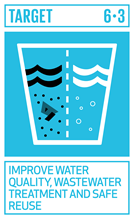Page History
Sustainable development relies on a constant and reliable source of freshwater. At the most basic individual level we rely on these sources to provide water for drinking, for washing and for food preparation. We also depend on these resources for irrigation, for recreation, to assimilate our waste water, for power generation and to support multiple industries. Freshwater ecosystems provide these services, but their ability to continue to do so is under threat. Pressures from human activities, such as the release of untreated effluent and changes to the surrounding catchment area that include agricultural intensification, deforestation and mining, cause damage to these fragile ecosystems.
The United Nations Environment Programme (UNEP) is the custodian agency for SDG indicator 6.3.2 and the Global Environment Monitoring Programme for Freshwater (GEMS/Water) is the implementing partner. All of the Goal 6 indicators are coordinated by UN Water under the Integrated Monitoring Initiative for Goal 6 (IMI-SDG6)

